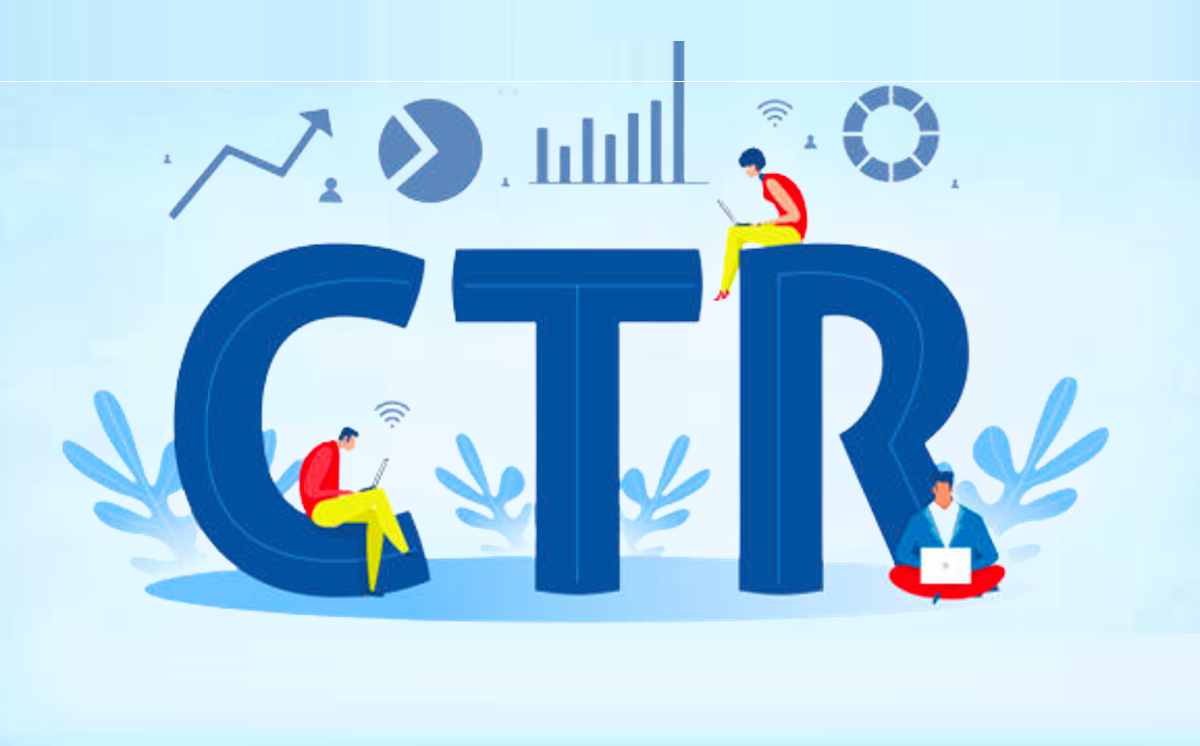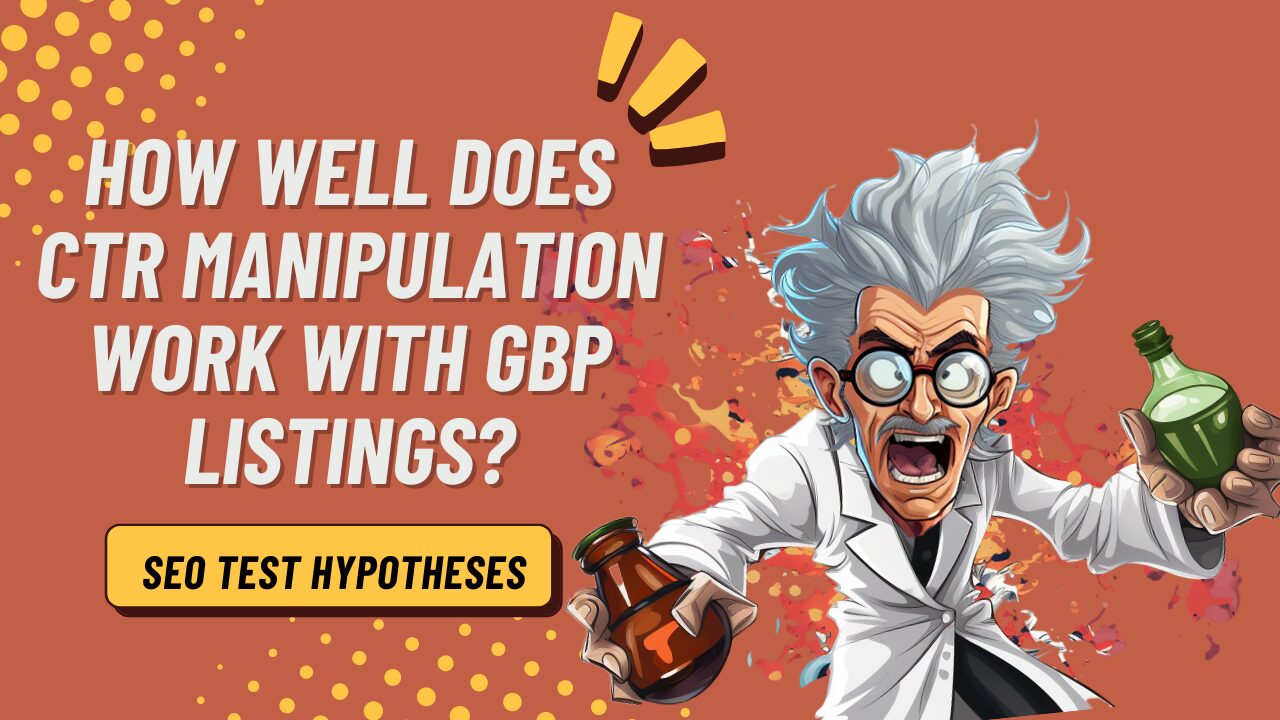Boost Your SEO Game with LinkDaddy CTR Manipulation Solutions
Wiki Article
Grasping CTR Adjustment for Optimum Impact
In the electronic landscape, grasping click-through rate (CTR) manipulation is essential for optimizing the influence of your material. Understanding the vital variables that affect CTR, such as target market engagement and timing, can encourage you to craft much more effective techniques.Comprehending Click-Through Price
 Click-Through Rate (CTR) is an important statistics in digital marketing that evaluates the performance of online promotions and content in driving customer engagement. It is determined by splitting the variety of clicks an advertisement or web link obtains by the number of times it is displayed, after that increasing by 100 to reveal it as a percent. A higher CTR suggests that the web content resonates more successfully with the target market, thereby improving the total efficiency of electronic projects.
Click-Through Rate (CTR) is an important statistics in digital marketing that evaluates the performance of online promotions and content in driving customer engagement. It is determined by splitting the variety of clicks an advertisement or web link obtains by the number of times it is displayed, after that increasing by 100 to reveal it as a percent. A higher CTR suggests that the web content resonates more successfully with the target market, thereby improving the total efficiency of electronic projects.Understanding CTR is crucial for online marketers as it gives understandings right into customer actions and choices. A low CTR might signal that the material is not enticing or pertinent to the audience, prompting a requirement for reevaluation of messaging, placement, or style. On the other hand, a high CTR might highlight effective strategies, assisting future marketing efforts.
Furthermore, CTR serves as a relative tool to examine various projects, enabling marketing professionals to enhance their approach and designate resources successfully. By analyzing CTR trends, businesses can improve their web content strategies, boost audience targeting, and inevitably attain better conversion prices. Thus, grasping CTR is important to enhancing electronic marketing performance and driving lasting development.
Secret Factors Affecting CTR
Numerous factors play a considerable role in determining the effectiveness of CTR in electronic advertising. Among one of the most prominent components is the relevance of the web content to the target audience - CTR Manipulation Service. Promotions or web links that reverberate with the users' interests and needs are more probable to amass clicksOne more important element is the high quality of the headlines and summaries. Involving and engaging titles can catch focus, while clear and concise meta descriptions can give context that motivates users to click through. In addition, the positioning of the content, whether it's over the layer or incorporated into a feed, can substantially affect exposure and, consequently, CTR.
Visual aspects also add to CTR. High-quality photos or videos can boost involvement, making the material more appealing. Furthermore, making use of call-to-action (CTA) switches plays an essential role; well-placed and influential CTAs can motivate users to do something about it.
 Last but not least, target market division is essential. Customizing messages to details demographics guarantees that the material gets to the ideal people, optimizing the chances of clicks. Understanding these essential variables is vital for properly controling CTR in electronic advertising and marketing efforts.
Last but not least, target market division is essential. Customizing messages to details demographics guarantees that the material gets to the ideal people, optimizing the chances of clicks. Understanding these essential variables is vital for properly controling CTR in electronic advertising and marketing efforts.Effective Strategies for Optimization
To maximize click-through prices effectively, online marketers should apply a series of targeted approaches tailored to their audience. First, crafting compelling headlines is crucial; these must be succinct, appealing, and include relevant key words that resonate with the target demographic. A/B testing different headlines can disclose which variants catch interest most successfully.Next, utilizing appealing visuals click here for info can considerably enhance involvement. Top notch pictures or videos that align with the web content can bring in individuals' attention and encourage clicks. Additionally, making sure that the call to action (CTA) is clear and persuasive is vital. CTAs should produce a sense of seriousness or highlight a benefit, motivating immediate action from the target market.
An additional method is enhancing advertisement placement and timing. Examining audience behavior information can assist marketers determine the very best times to release campaigns for optimum exposure. Individualizing content based on user choices and previous communications can cultivate a more powerful connection and improve CTR.
Lastly, preserving mobile optimization is important. With boosting mobile use, ensuring that material is accessible and aesthetically appealing on smaller displays can substantially affect click-through rates. By accepting these techniques, marketing professionals can efficiently boost their CTR and drive far better project performance.
Tools for Tracking CTR
Tracking CTR properly is necessary for understanding the performance of marketing projects and making data-driven choices (GMB CTR Manipulation). To achieve this, several devices are available that assist in precise monitoring and evaluation of click-through ratesGoogle Analytics is one of one of the most widely used tools, supplying extensive insights into user behavior, consisting of CTR for various web pages and projects. Its capability to segment data enables marketing experts to analyze performance across various demographics and website traffic sources.
An additional useful tool is SEMrush, which offers detailed reports on CTR for paid search projects. It enables customers to compare their CTR versus sector standards, supplying vital context for performance assessment.
For social media projects, systems like Hootsuite and Sprout Social deal integrated analytics that track CTR throughout numerous social networks. These devices not just offer click-through information yet also enable for real-time tracking of engagement metrics.
In addition, A/B testing tools such as Optimizely can aid online marketers track CTR variants in between different ad versions or touchdown web pages, exposing which components drive higher involvement. Making use of these devices makes certain marketers can successfully check and fine-tune their approaches, eventually making the most of the impact of their campaigns.
Examining and Adjusting Methods
Although information collection a knockout post is important, evaluating and changing methods based on click-through price (CTR) understandings is where real optimization takes place. A thorough evaluation of CTR information enables marketing professionals to recognize patterns, trends, and anomalies that can educate critical choices. This involves segmenting information by demographics, tool kinds, and traffic resources to establish what resonates with particular target markets.When insights are gathered, it is necessary to adjust techniques appropriately. For example, if a specific advertisement copy or aesthetic continually underperforms, revising the message or imaginative elements can drive enhancement. A/B screening functions as a useful technique for assessing the effectiveness of these changes by comparing variations to see which generates a greater CTR
 Continuous monitoring and iterative modifications make sure that methods remain aligned with evolving customer habits and choices. Inevitably, a data-driven technique to analyzing and changing techniques will certainly generate click reference significant gains in CTR, leading to improved overall advertising and marketing efficiency and ROI.
Continuous monitoring and iterative modifications make sure that methods remain aligned with evolving customer habits and choices. Inevitably, a data-driven technique to analyzing and changing techniques will certainly generate click reference significant gains in CTR, leading to improved overall advertising and marketing efficiency and ROI.Final Thought
Finally, understanding click-through price control needs a comprehensive understanding of its underlying principles and the key factors that influence it. By executing efficient strategies for optimization and using suitable devices for tracking performance, content makers can significantly enhance involvement. Continuous evaluation and modification based upon audience comments will additionally refine approaches, eventually driving enhanced conversion prices. The integration of these elements will make sure that material resonates with the target audience, optimizing influence in an affordable electronic landscape.In the electronic landscape, grasping click-through rate (CTR) manipulation is essential for maximizing the impact of your material.Click-Through Price (CTR) is an essential metric in electronic marketing that evaluates the efficiency of online promotions and web content in driving individual involvement. A higher CTR shows that the web content reverberates extra properly with the target audience, thereby improving the total efficiency of electronic campaigns.
A reduced CTR might indicate that the web content is not attractive or pertinent to the audience, triggering a demand for reevaluation of design, messaging, or positioning. By analyzing CTR fads, businesses can improve their content techniques, enhance audience targeting, and eventually achieve much better conversion prices.
Report this wiki page